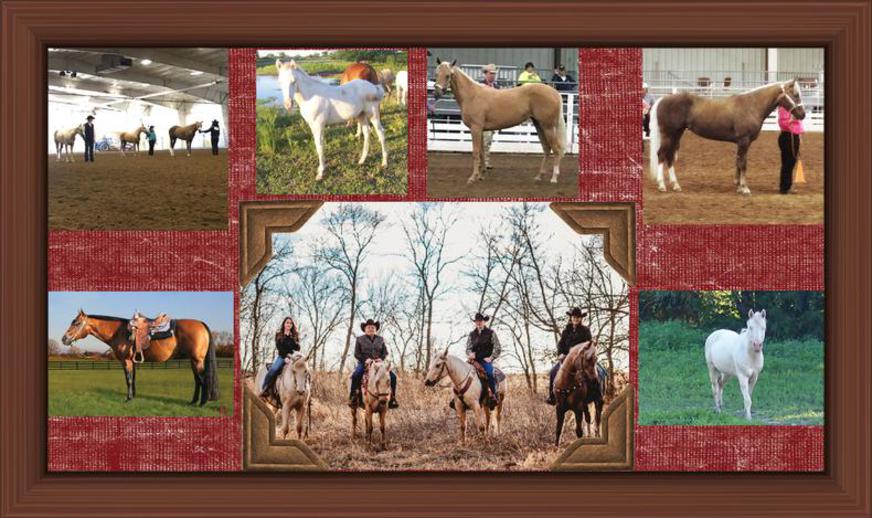Imprinting
by Karen Tharp on 08/29/11
Brad and I have started weaning both Twister's foals. Rocky the stud colt is doing fantastic, but I made it back to Michigan in time to be there for his birth. When he was born I imprinted him.
Sister was born before I could get back, and she didn't get imprinted to humans so she's not nearly as calm as Rocky. Rocky never ran the fences calling to his mom. So far with Sister we have had two nights of her calling her mom.
We have them penned so her mom can come up to the fence and nuzzle her, but Gracie her mom seems to think it was time for Sister to be weened. Shes keeping her distance.
When a foal is first born there is a span of about an hour where the foal will lie down and rest before drinking his mother's milk for the first time. During this small window the foal's owner will enter the stall and rub the foal down from head to tail in order to desensitize him and form a horse-human bond.
Some handlers will stick with the basics and desensitize the foal solely to touch while others will go further and desensitize the foal to paper bags, newspapers, vacuums, clippers and insertion of a finger into the anus.
Does it work?
Yes. I have imprinted some foals before the foals were able to feed for their first time and the results were wonderful. Each of the foals was not afraid of humans and would actually leave the mother's side to approach me when I visited.
Sister wasn't imprinted and isn't as easy to handle as Rocky, but she will learn that Brad and I are going to cause her no harm. When she realizes this she to will calm down and be a joy to handle.
So remember you do want to visit your young foal as early as possible and expose him to your presence and touch. I have not found any difference in a horse that has been imprinted within one hour of birth or a couple hours after birth, I have seen a significant difference between foals imprinted within a few hours and those not imprinted at all that first day.
Do not underestimate the power of working with those foals the first few hours and days, for those are the days where the horse will be the most impressionable. The groundwork you lay there will remain with the horse forever.
But be careful!
If you imprint a horse improperly, you can end up doing far more damage than good. Remember that the foal will be very impressionable at that age, so if you reassure him and desensitize him to certain actions or stimuli he will forever better respond to them. On the other hand if your desensitization attempts are done improperly such that the foal becomes traumatized or manages to resist your attempts instead, you will have set a difficult precedent to break in the future.
For that reason, I generally advise sticking with the basics. Visit the foal so he immediately sees you as a regular part of the "herd." Talk to him soothingly as you pet him down, paying particularly close attention to his head and ears since those are areas an adult horse dislikes most.
Rubbing a foal's front shoulder area and upper haunches are particularly effective if you wish to relax him. Those two areas are the same areas the dam will nuzzle to comfort her foal, and in fact if you watch horses in a herd they all focus on those areas throughout their entire lives.
Ultimately imprinting is a wonderful tool that can be performed by anyone, but if you are relatively new with horses it is recommended you purchase a couple videos or books on imprinting so that you can rest assured you do it correctly.
And if you miss that first valuable day… don't worry! Just interact with your foal as quickly as possible because whereas the foal may be a little more apprehensive as time goes by, you can ultimately develop a bond with a horse of any age.
Hope you enjoy my blog! Have a safe day and GOD BLESS YOU!!!










